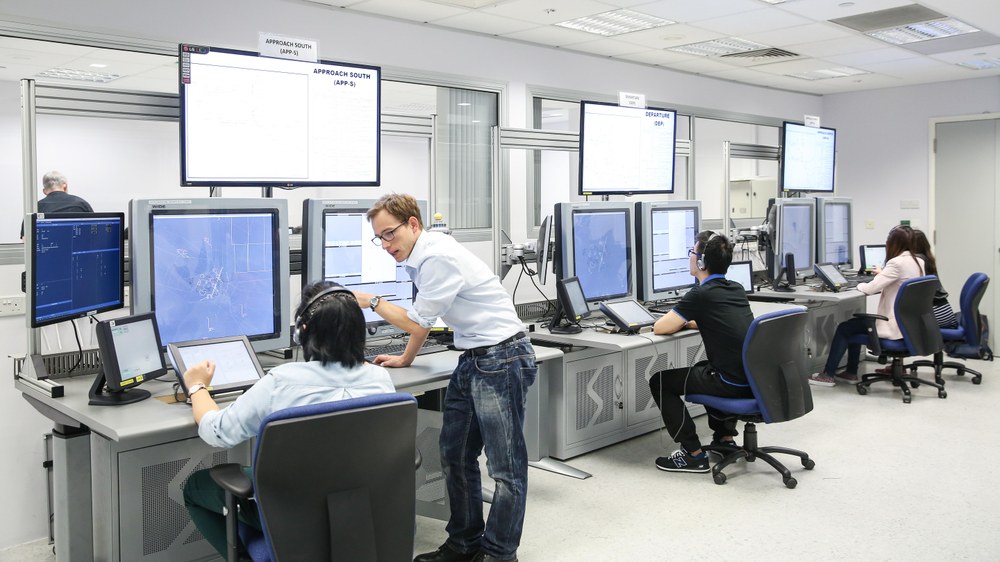Air Hub Singapore invests in ATM technology from DLR
The Air Traffic Management Research Institute (ATMRI) of Nanyang Technological University (NTU) in Singapore was officially inaugurated on 20 August 2015. An air traffic simulation centre forms the core of the new institute. This simulation centre hosts one of the largest 360-degree tower simulators in the world (more than 12 metres in diameter), a radar and operations simulator, as well as various laboratory work stations. These simulators are now available for research on future ATM concepts for the Air Hub Singapore, which in the past years repeatedly has been calling attention with 2-digit rates of growth. The German Aerospace Center (Deutsches Zentrum für Luft- und Raumfahrt; DLR) supported the development of the simulation centre with its expertise. This technical support is just the beginning of long-term cooperation between the DLR Institute of Flight Guidance and the newly founded ATMRI. Initial research projects involving optimised flight paths and ground operating procedures to reduce delays are already underway.
Simulator training and acceptance tests
"With the new radar and tower simulators in Singapore, we have set up something very similar to our own DLR research facility in Braunschweig." says project manager Reiner Suikat from the DLR Institute of Flight Guidance. "The main support we provided to our Asian colleagues was the specification and commissioning of the facilities, as well as the modelling of the Singapore airspace and Changi airport." Together with DLR colleagues, Suikat was on location to put the new simulators into service. "We performed final acceptance tests for the two simulators and trained ATMRI personnel in the operation of the new facilities."
Improving operations at Changi airport
Due to its central location in South East Asia, Changi Airport is of huge importance for air traffic in the region. In 2014, there were more than 54 million passengers and 341,000 flights. Therefore, the initial joint research projects between NTU and DLR are focused on optimising air traffic and procedures at Changi Airport. One project focuses on air traffic guidance along environmentally friendly and low emission four-dimensional trajectories. A four-dimensional trajectory specifies not only the flight path, but also the times at which specific points must be reached. The focus of a second project is on the optimisation of ground traffic at the airport by coordinating arrivals and departures, together with taxi guidance to and from the runways. This coordination is expected to increase punctuality at the airport significantly.
Joint research between Braunschweig and Singapore
Still a bit ahead, but technically possible, is the connection of the tower and radar simulators of DLR in Braunschweig and NTU in Singapore, as these are very similar and are based on the same core software. The software, NARSIM, was developed by the Netherlands Aerospace Centre (NLR), DLR's Dutch partner institution. DLR has joined NLR in the further development of NARSIM, which has been established as a valuable research tool. "With this common base, we have the possibility to simulate air traffic between Germany and Singapore in a coupled simulation," says Suikat. Based on the common research infrastructure, cooperation between ATMRI and DLR will be expanded in the future.


